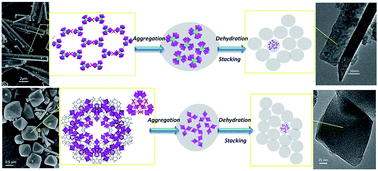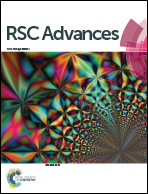A non-template approach to fabricate mesoporous alumina with predefined morphology by solid-state transformation of Al-based metal–organic frameworks
Abstract
Mesoporous alumina with different morphologies was synthesized via thermal decomposition of the Al-based metal–organic frameworks (Al-MOFs) MIL-110 and MIL-100, in which Al-MOFs were used as the Al source and precursor. The hexagon rod-shaped and octahedron-shaped alumina products with morphology retained from their precursors were obtained and characterized. The results show that the construction of Al-MOFs, especially the aluminium building units plays a key role in the textural structure of the obtained alumina products. Besides, the differences in textural properties as well as the possible formation mechanism of the final alumina products are well explained by taking into account thermal behaviour and intrinsic structure features, especially the aluminium building units, of the Al-MOFs precursors. This work presents an easy new method to produce alumina with tailored morphology, tunable texture and microstructure, which is also an operational method fit for other metal oxide materials.


 Please wait while we load your content...
Please wait while we load your content...